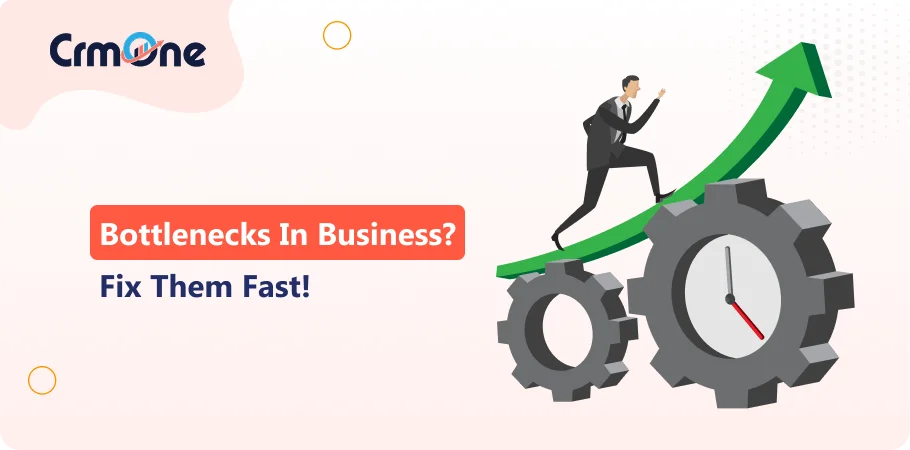What is a bottleneck in business? simply means your business is on hold. Particularly such type of situations arise in the manufacturing sector. When due to any reason the process is stopped. This has a negative impact on business growth and there are many examples of companies losing their capital due to it.
Bottleneck in a business refers to a point of congestion within a workflow or process where the capacity is insufficient to meet demand, that causes delays and inefficiencies. Identifying and addressing a business bottleneck is crucial for maintaining smooth operations and preventing operational inefficiencies.
The term originates from the shape of a bottle where the narrow neck restricts the flow of liquid, in the same way the limitations of resources, tasks and production happens.
Bottlenecks can lead to increased production costs, reduced throughput, and missed deadlines. If left unresolved, they can disrupt supply chains, hinder productivity, and damage relationships with customers and suppliers.
So, Exactly What is a Bottleneck in business?

Bottleneck meaning in business is the halt of business operations. It can lead to various loses.
Increased Costs:
If it happens, bottleneck in production can increase cost by wasting resources and increasing delays. When a work stage reaches its maximum capacity, it can lead to increased costs due to interruptions and delays. The best example is Tesla’s Model 3 production that faced the same scenario in 2017 due to inefficiencies in battery module assembly, resulting in only 260 cars produced out of 1500.
Reduced Productivity:
Bottleneck in operations management slows down workflows, which can lead to missed deadlines and reduced output, affecting the entire system.
Note: 22% of bottlenecks occur in marketing and project management processes, leading to inefficiencies across departments.
Employee Burnout:
One of the main problem that arises is employee burnout. Continuous resource bottleneck of overload employees, that leads to frustration among them.
What Short-Term vs. Long-Term Bottlenecks Mean?
1. Short-Term Bottlenecks:
These are temporary disruptions that are caused by un-forseen issues such as employee on sick leave or delayed shipments due to weather.
Example: A factory experiences a one-week delay due to supply chain issues but resumes normal operations once resolved.
2. Long-Term Bottlenecks:
These are long term issues. Also majority are manufacturing process bottlenecks that can happen due to out-dated machines or if a new machine comes up the employees are not trained enough to operate it.
Similarly, a healthcare company with outdated healthcare CRM struggles to process patient data efficiently, delaying appointments and insurance claims.
Types of Bottlenecks:
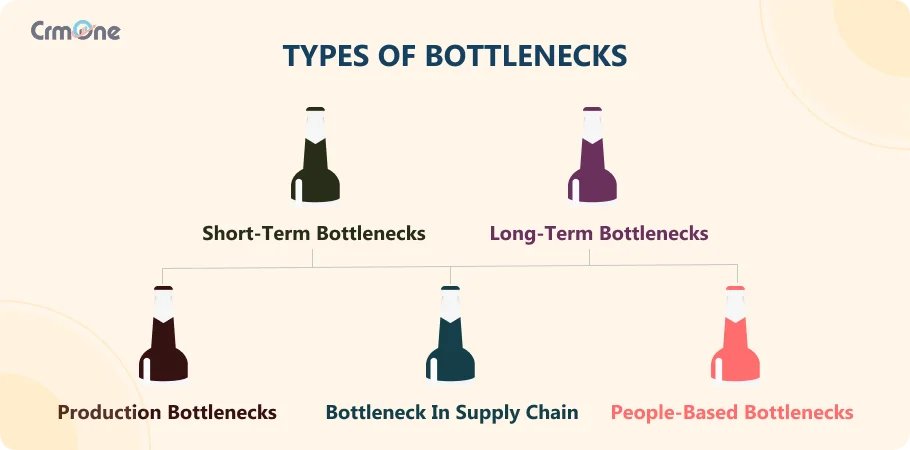
Bottlenecks in businesses can be divided into three primary types:
1. Production Bottlenecks
Every process in business is related to each other, we very well know that. The production bottleneck occur when delay arises in manufacturing or assembly lines, which limits the ability to meet the production targets.
Its common causes are equipment failures, outdated machinery, or poor forecasting of inventory.
Production bottlenecks can increase labor costs and waste resources. For example, delays in sourcing raw materials can cost medium-sized businesses up to $5,000 per day in lost sales.
2. Bottleneck in Supply Chain:
When there is a disruption in the flow of materials or goods through the supply chain, then Supply Chain bottleneck occurs. It can be caused due to delay in deliveries, customs issues, or capacity constraints. Delays in the production line can lead to supply chain bottlenecks, impacting overall business performance.
Recalling the Covid-19 pandemic, when the global supply chain experienced the same due to port closures and shipping delays. Companies faced increase in costs and reduced customer satisfaction as essential goods were delayed.
This can lead to missed market opportunities and higher operational costs. Poor forecasting can push up more by overestimating demand or underestimating it. Using CRM for logistics or supply chain can improve visibility, communication and helps the businesses to stay on track.
3. People-Based Bottlenecks
A common type of issue that arises when employees are overloaded or when processes are dependent heavily on specific individuals. This causes lack of cross-training and inefficient workflow approvals.
A procurement team member may face delays if purchase orders require approval from a manager with a backlog of emails or who is unavailable due to vacation.
People-based communication bottlenecks lead to employee burnout and lower morale. Overworked employees handling repetitive tasks experience stress that reduces productivity and increases turnover rates.
How to Identify Bottlenecks?

To enhance efficiency and maintain a competitive advantage, it is crucial to identify bottlenecks in your business processes. Identifying these bottlenecks can prevent operational and financial issues, directly impacting productivity and overall business growth. Various techniques can be employed to find and address these bottlenecks, ensuring smoother operations and better performance.
Map the Workflow First:
You can use tools like CrmOne, Gantt charts, Kanban boards, and process flow diagrams to visually map the workflows, making it easier for identifying bottlenecks and areas of delays.
For example, using Kanban boards to track task progress can reveal stages where tasks consistently pile up or stall.
Find the Root Cause:
I believe that solving the problem should be from root so that it never happens again. This will be time consuming a bit but beneficial in long term.
You can use the Fishbone Diagram(Ishikawa) the helps identify root causes of bottleneck of a process by categorizing potential issues such as manpower, methods and materials.
A manufacturing plant may use this diagram to uncover that outdated machinery is causing delays in production.
Analyze the Indicators:
You can easily track metrics such as cycle times, throughput rates, and resource utilization.
Example: Northrop Grumman used digital performance management tools to discover bottleneck operations availability, which hovered between 90–100%, highlighting opportunities for improvement.
Accumulations matter:
Find out the areas in your manufacturing sector or assembly line that is taking too much time for doing the process. Is it due to advancement in tech, or lack of employee knowledge, find out the problem. This bottleneck can be easily solved by replacing the machine, or shifting the position of that employee.
Why Bottlenecks Occur in Business Operations?
1. Lack of Resources
It has a direct impact on production. The insufficient supply of materials can halt production lines. A manufacturer may face delays if a critical component is out of stock, that can cause a backlog in assembly.
Sometimes there is a shortage of skilled workers that can cause production bottlenecks. Even if you have all the raw materials but without that efficient worker you won’t be able to proceed further.
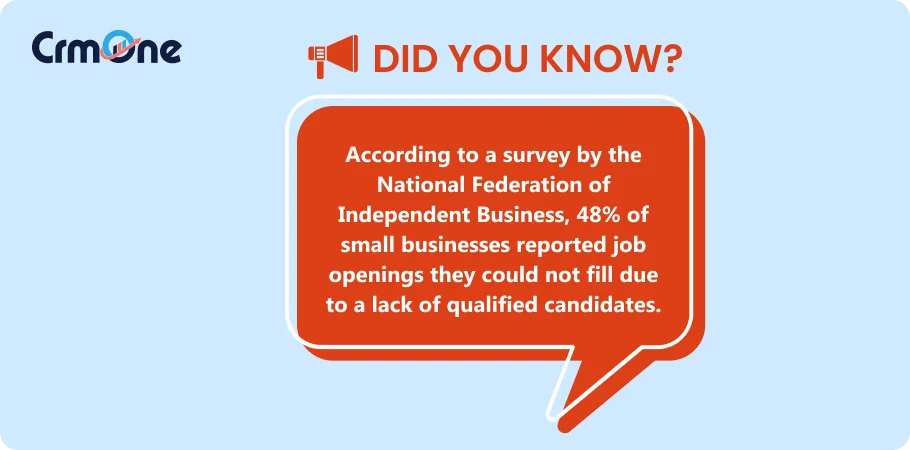
2. Inefficient Processes or Outdated System
Inefficiency in workflow can lead to delays, increased costs and then operational bottlenecks. These bottlenecks can disrupt the production system, affecting overall productivity and necessitating a review of workflows to address inefficiencies and improve performance. Relying on manual processes instead of automated systems can slow down productivity.
A company using outdated software for inventory management may struggle to track stock levels accurately, leading to over-ordering or stockouts.
Research from McKinsey indicates that companies that align their processes can improve productivity by up to 30%.
3. High Demand Spikes or Poor Planning
What if there is a sudden increase in demand? Every business faces this, especially during holiday seasons or product launches. It can overwhelm current processes and resources.
A tech company launching a new gadget might see a surge in orders. If production can’t keep up, this can lead to delays and unhappy customers.
Bad planning during these times can create bottlenecks. Companies might lack enough resources or backup plans.
A Harvard Business Review study shows that 70% of product launches fail. This often happens because of poor market understanding and planning.
Boost Your Business
Performance with CrmOne
Our experts will guide you through the most effective
ways to use CrmOne,
ensuring you fully leverage its
features for maximum impact on your business.
4. External Factors
External disruptions such as weather events, natural disasters, or regulatory changes can impact operations.
Regulatory delays, such as those related to compliance or permits, can also create bottlenecks in industries like construction or pharmaceuticals, where approvals are necessary before proceeding with projects.
Strategies to Remove Bottlenecks
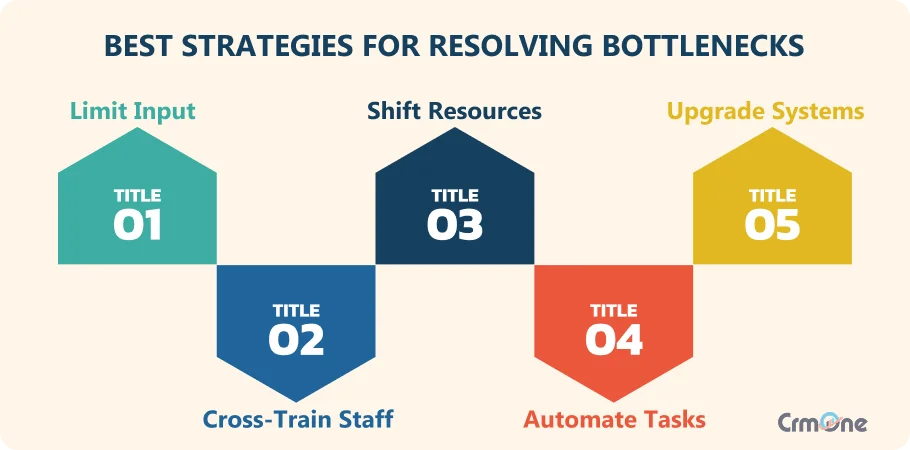
Reduce Input to Ease Congestion Temporarily
Majority of the companies focus on this one. When a bottleneck is identified, reduce the flow of incoming tasks or materials. This can help balance the pressure in the process. This allows to catch up and clear backlogs.
In a manufacturing setting, if an assembly line is overwhelmed, temporarily halting new orders or limiting production rates can help clear existing work.
2. Reassign Resources to Address Immediate Issues
Immediate issues should be addressed first because they can transform into bigger ones. Hence quickly relocate personnel or equipment to critical areas that can help address bottlenecks as they arise.
If a shipping department is facing delays due to a backlog of orders, temporarily assigning additional staff from customer service can help expedite the processing and shipping of orders.
Upgrade Inefficient Equipment or Systems
Investing in modern equipment or software is always a wise choice. Understanding production capacity is crucial to identify and address bottlenecks within manufacturing processes. Don’t think it as a waste of capital, in fact the revenues generated can cover your capital so fast. This can enhance productivity and reduce bottlenecks that are caused by out-dated technology.
A company using manual inventory tracking may benefit from implementing an automated inventory management system, which can streamline processes and reduce errors.
Train Employees to Handle Multiple Tasks
Allow your employees to train in different process too. This will skill up their talent and it will be beneficial to you too.
The cross-training employees allows them to perform various roles within the organization, that provides flexibility during peak times or when specific individuals are unavailable.
Lets take an example. In a restaurant, training servers to assist with food preparation during busy hours can help maintain service levels and reduce wait times for customers.
Automate Repetitive Processes Where Feasible:
Automating the repetitive tasks can free up human resources. It improves efficiency and reduces the capacity bottlenecks. Additionally, automation can help resolve process bottlenecks by ensuring timely project completion and maintaining customer trust through predictable operations.
Using CRM tools to process automation in finance departments to handle invoice processing can reduce manual workload and speed up transaction times.
Note: According to a report from McKinsey, organizations that automate routine tasks can increase productivity by 20-30%.
Preventing Future Bottlenecks
1. Check Reports in fix period
You should definitely check upon your business process and how they work, but most importantly the results they are bringing in.
Continuous monitoring of workflows and performance is necessary to identify the potential bottlenecks early on.
Utilize tools like dashboards to visualize workflow performance and track metrics such as cycle times, throughput rates, and resource utilization.
Schedule regular reviews of performance data to identify trends and areas needing improvement.
2. Increase the Capacity
Majority of the economic bottleneck are connected with production lines. Business bottlenecks disrupt productivity and efficiency within various operational processes. If you know that demand is going to be more, then increase the capacity of production employees and bring in more machines.
This will reduce most of the bottlenecks in production. It will help you meet the demand, reduce employee burden and smooth the process.
3. Use Predictive Analytics to Forecast Demand and Resource Needs
I recommend using CRM tools to use the predictive analytics that let you anticipate fluctuations in demand and adjust resources accordingly.
Use data analytics tools that can analyze historical sales data, market trends, and seasonality to forecast demand accurately.
Adjust inventory levels, staffing, and production schedules based on predictive insights.
4. Be Cross-Functional:
Work with enthusiasm and lead the team with motivation to collaborate among different departments that can help identify potential issues early. It is a holistic approach to problem solving. This type of mind-set is very important for business processes.
Conduct regular interdepartmental meetings or workshops where teams can discuss challenges and share insights related to workflows.
Create cross-functional teams tasked with identifying and fixing bottlenecks, and developing solutions collaboratively.
Real-Life Examples of Bottlenecks
1. The Ever Given Shipping Incident
What Happened?
March 23, 2021 the Ever Given, a 400 meter container ship, got stuck sideways in the Suez Canal. One of the world’s busiest shipping routes was blocked for 6 days. Over 367 vessels were backed up and global trade was disrupted to the tune of $9 billion a day.
Impact:
- Delayed shipments of crude oil, consumer goods and raw materials.
- Companies had to go around the Cape of Good Hope. This added thousands of kilometers to their supply chains.
- The incident exposed weaknesses in global supply chains that rely on single chokepoints.
Lessons Learned:
The Suez Canal Authority began a $10 billion expansion project. They also upgraded their salvage equipment to handle future crises better.
Companies should diversify their supply chains. They need contingency plans to lower risks from chokepoints, such as the Suez Canal.
New pilot training and simulation exercises aim to boost navigation safety in narrow waterways.
2. Tesla Model 3 Production Delays
What Happened?
In 2017 Tesla hit major roadblocks making the Model 3. The main problem was slow battery module assembly at the Gigafactory in Nevada. Elon called it “production hell”. In Q3 only 260 cars were made, way short of the 1,500 target.
Impact:
- Customer deliveries were delayed and Tesla’s reputation was dented.
- Tesla had to absorb the extra costs of trying to fix the inefficiencies. They automated processes and reallocated resources.
Lessons Learned:
Tesla invested heavily in automation to streamline the production process.
They learned it’s better to scale up production gradually so you don’t overcommit resources too early.
Regular updates from Elon helped manage customer expectations during the delays.
Tools for Bottleneck Analysis and Management
1. CrmOne

A great, bottleneck analysis tool to identify the problems and align everything. It uses hyper AI and automation to track everything. It can keep your inventory to perfect level, manage resources, capital, make the payment system automated, align the assembly line and so more.
Automates task assignments and follow-ups, reducing manual bottlenecks in sales pipelines. Provides detailed analytics on lead conversion times, helping identify delays in the customer journey. Integrates with other tools to create a unified workflow system.
2. Asana

A project management tool that allows teams to visualize workflows using Kanban boards, Gantt charts and task lists. It also lets teams to identify stages where tasks pile up.
It offers updates on task progress, that makes it easier to spot delays. It promotes co-ordination among teams by centralizing communication and task dependencies.
A marketing team can use Asana to monitor campaign timelines and address bottlenecks caused by delayed approvals or content creation.
3. Pipedrive

Pipedrive is a CRM tool focused on sales pipeline management that helps businesses track deals and optimize sales processes.
Visualizes the sales pipeline, highlighting stages where deals get stuck. Automates repetitive tasks like follow-ups and meeting scheduling to free up resources. It also provides insights into conversion rates and bottlenecks in the sales funnel.
4. Jira
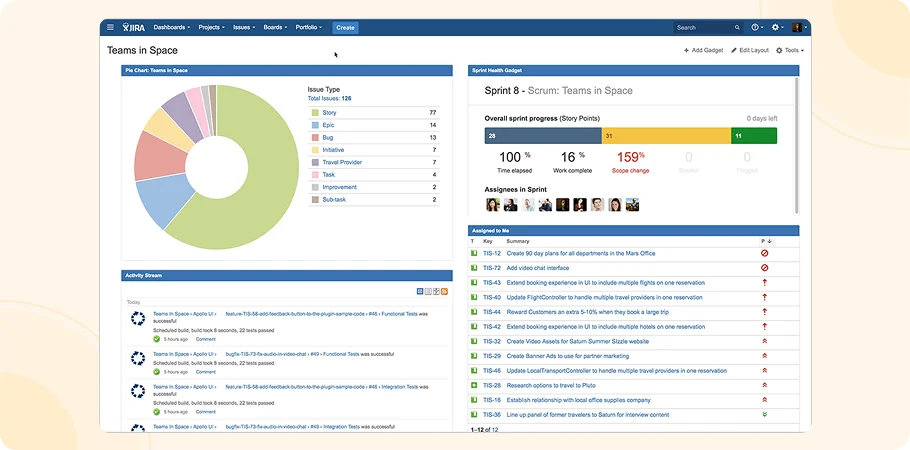
One of the most powerful project management tools that is widely used for agile workflows and task tracking. It offers Kanban boards and timeline view to visualize everything that can let you identify the common bottlenecks easily.
A software development team can use Jira to track sprints and address bottlenecks caused by delays in code reviews or testing.
Conclusion:
Bottleneck management is very necessary. You need to identify the areas that need improvement. Every process is connected with each other. And problem in one can lead to halt of other processes too. The advantages of preventing bottlenecks in businesses is production is improved, sales number are higher, increase in ROI, employee satisfaction and more.
A group of small points when connected become a line. This is what happens in business. Small problems when combine, they form a big issues. That’s why understanding what is a bottleneck in business and addressing it promptly is crucial for maintaining efficiency and smooth operations.
Get started for Free
Start for free today. Boost your sales by clicking the Get Started button. With CrmOne, you can manage leads, sales, and customer service all in one place.
